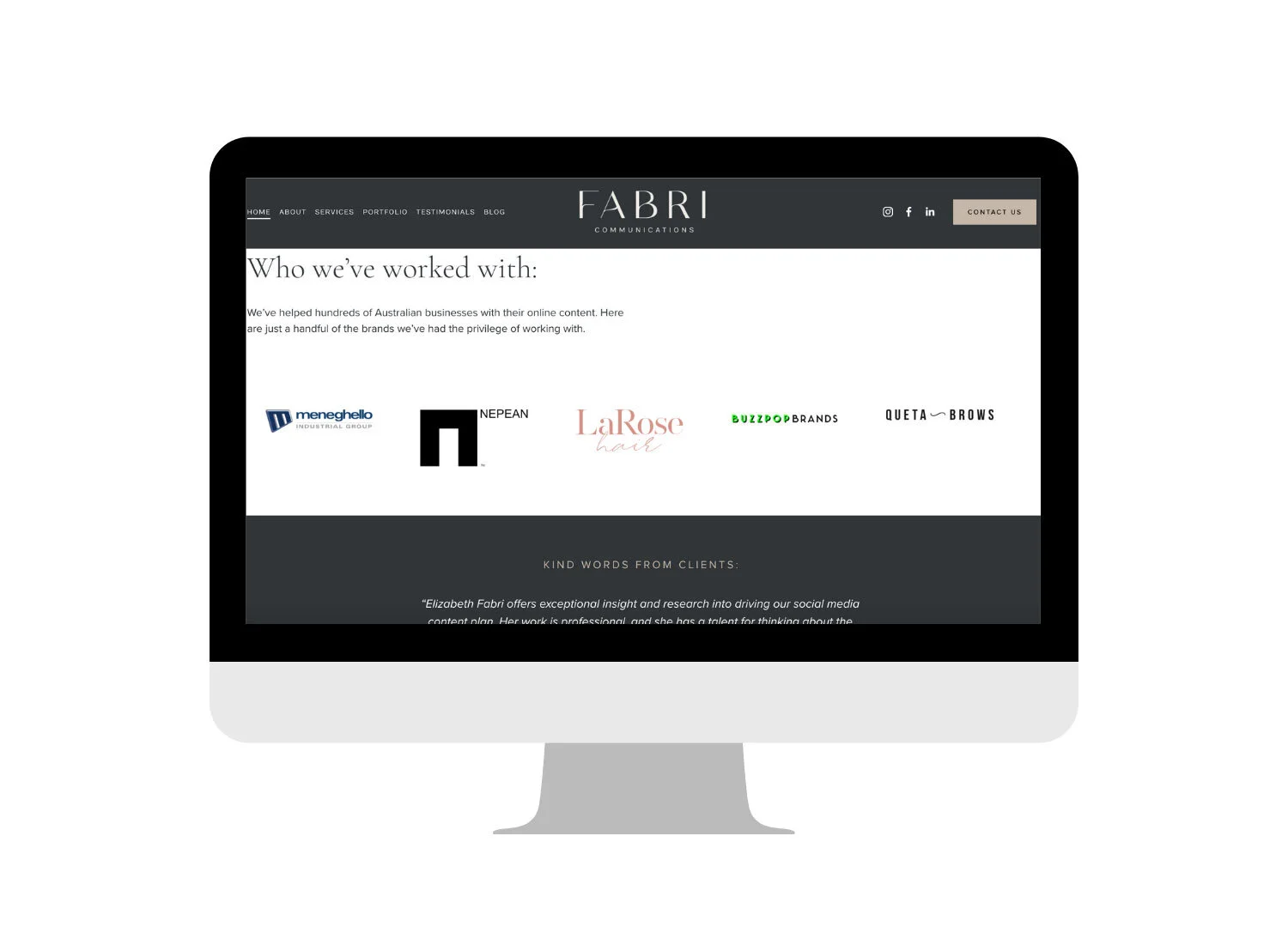What to include on your website Home page
Is the Home page on your website helping drive conversions for your business, or is it driving people away in mere seconds? Let’s find out.
No matter how great you are at your business or how amazing your products or services are, without an effective website Home page, you’re missing out on so many potential leads.
According to our friends over at Hubspot, studies show 55% of users visiting websites spend 15 seconds or less on a site before exiting.
That’s less than 20 seconds to make an impression. Difficult? Yes. Impossible. No. It’s all about strategy.
First, let’s take a look at a user’s journey. Users visiting your site, typically will be coming from Google.
You’ve done the leg work to get them there in the first place, whether that’s through organic SEO or paid ads. But they probably have 10 other tabs open of your competitor’s sites too.
Your goal: to be the preferred choice. The website with the lowest bounce rate. A website that works for your business and communicates your key offerings clearly and compels people to take action.
This is why it’s so important your Home page is set out correctly, is engaging, loads quickly, and has all the ingredients for success to give your business its best shot at getting users to take that next step – whether that’s buying your product, booking in that free call, enquiring about your service, downloading your eBook, etc.
So where to start? We’ve outlined the 11 essential ingredients for a successful Home page below. Get the notepad ready, and let’s see how many your website is ticking off.
1. PROFESSIONAL IMAGES + HIGH-RES LOGO
This may seem like a no-brainer, but as online marketing professionals, we look at a lot of websites every day, and it really is astonishing how many aren’t investing in quality visuals. A professionally designed logo is a given. Booking a professional photoshoot for your business is also essential. While it may be tempting to use stock images, and yes, they do have their place when used correctly. Ideally, you should be using as many of your own images to build trust with your audience. If you don’t take your business seriously, why would a potential customer?
One thing that is important to note, if you’re doing your own website, you need to make sure your photos are optimised for the web (good quality but a small file size) to ensure your pages load quickly.
2. SEO KEYWORDS
Many of you will be familiar with SEO (Search Engine Optimisation). If you’re not, the SEO keyword component is using targeted keywords in your website copy to help get you found on Google and improve your rankings. There are a number of websites you can use to do your keyword research, including Google Search Console, Soovle, Jaaxy, Ahrefs, Keywords Everywhere.
3. HEADLINE/TAGLINE
Your headline/tagline should be one of the first things people see when they visit your website. It should be front and centre and not buried within. This is where hiring a professional copywriter can be a game-changer in finding the right words to use for your headline that will hook people in and make them want to learn more. Depending on your website design, this could be a short sentence at the top, or a few on rotation over an image carousel. The less is more approach usually works best here. By hiring a professional copywriter to get your brand message and tone of voice right from the start, this will help generate leads.
4. INTRO COPY ABOUT WHO YOU ARE
Your Home page should tell people straight up who you are and how you can help them. But it needs to be done succinctly because no one is going to read a huge essay of text. Your job is to make it easy for them to learn about you and how you can help them. We recommend keeping this section short, up to 100 words, with a CTA link directing people to your About page to learn more. As discussed, the key aspect here is doing this in a way that speaks to your target audience direct, addressing their pain points and how whatever you sell, or offer is going to benefit them.
5. SERVICES/PRODUCTS SNAPSHOT
Next up, is displaying your services or products clearly. This could be a brief breakdown of your core umbrella services or product categories with hyperlinks to where they can learn more. Again, keep the copy to a minimum here. Using subheadings or images to break up your copy so it’s clear, can make your page easier to navigate.
6. OUTLINING THE BENEFITS
Another option is breaking down some of the benefits (in column/list format) to address your client pain points further and appeal to your customer avatar – the type of person you want to be buying your products or services. This is where you can also communicate your unique selling points (how you’re different to competitors). By focusing on the benefits, rather than just the features, you’re digging deeper into how your business can help others and make their life easier. Copywriting does come down to psychology and finding the things that will motivate your users to make a purchasing decision.
7. SOCIAL PROOF
Social proof is a powerful marketing tool to drive conversions for business and could be just the thing that wins over someone that was still sitting on the fence. By sprinkling in some testimonials onto your Home page, this elevates your credibility as a business. If you’ve won a number of esteemed awards for your business too – this might be worth including, and if you’re a service-based business, displaying logos of the company’s you’ve worked with is also a worthy inclusion. Tip: Make sure you include the full name of the customer when including a testimonial. Anonymous testimonials don’t hold the same weight and may raise doubts over their legitimacy.
8. CALL TO ACTIONS
This is probably one of the most important features you should be including all throughout your website. On your Home page, there should be a number of strategic call to actions that invite your visitors to do what you want them to do. This may be to book a free 15-minute call, which is where you then work your magic and convert them to a paying customer or contact you via email, sign up, click to learn more. This is why you do need to think about strategy and what your objectives are before you build your site to make your CTAs work for you. Using buttons to make these stand out visually on your site is also a must!
9. SUBSCRIBE TO EMAIL
Building your email list is a great website objective. But you need to do it in a way where users will feel they will benefit from signing up to your email list – otherwise why would they bother? Gated content (i.e a free eBook or resource) is a great way of capturing user information. This can be included as a pop up (after at least 30 seconds to 1 minute – so it’s not too spammy) and within the site as well. Another popular option is, of course, the sign up to receive 10% off first order code. Or you may have really helpful tips you’ll be sharing regularly and communicate the value in them receiving that if they sign up.
10. SOCIAL LINKS
Cross promotion is important between your marketing channels, including your website and social media accounts. Integrating a widget for Instagram displaying your top 8 recent posts, for example, is also an easy way to keep things fresh on your website (even when you haven’t updated it for years). This is also another way of getting visitors to follow you on social media and nurturing them via your social media marketing plan.
11. AN OFFER
This last little tip may not apply to all businesses, but it can be very effective. An offer could include a free trial period, 10% off first order, free e-Book, a free phone consult, book in before a certain date to secure a discount or bonus inclusion etc. A little sweetener to get someone across the line.
If you’d like some further assistance on improving your website Home page, feel free to get in touch and we can cast our eye over yours!
Email us at info@fabricommunications.com.au



